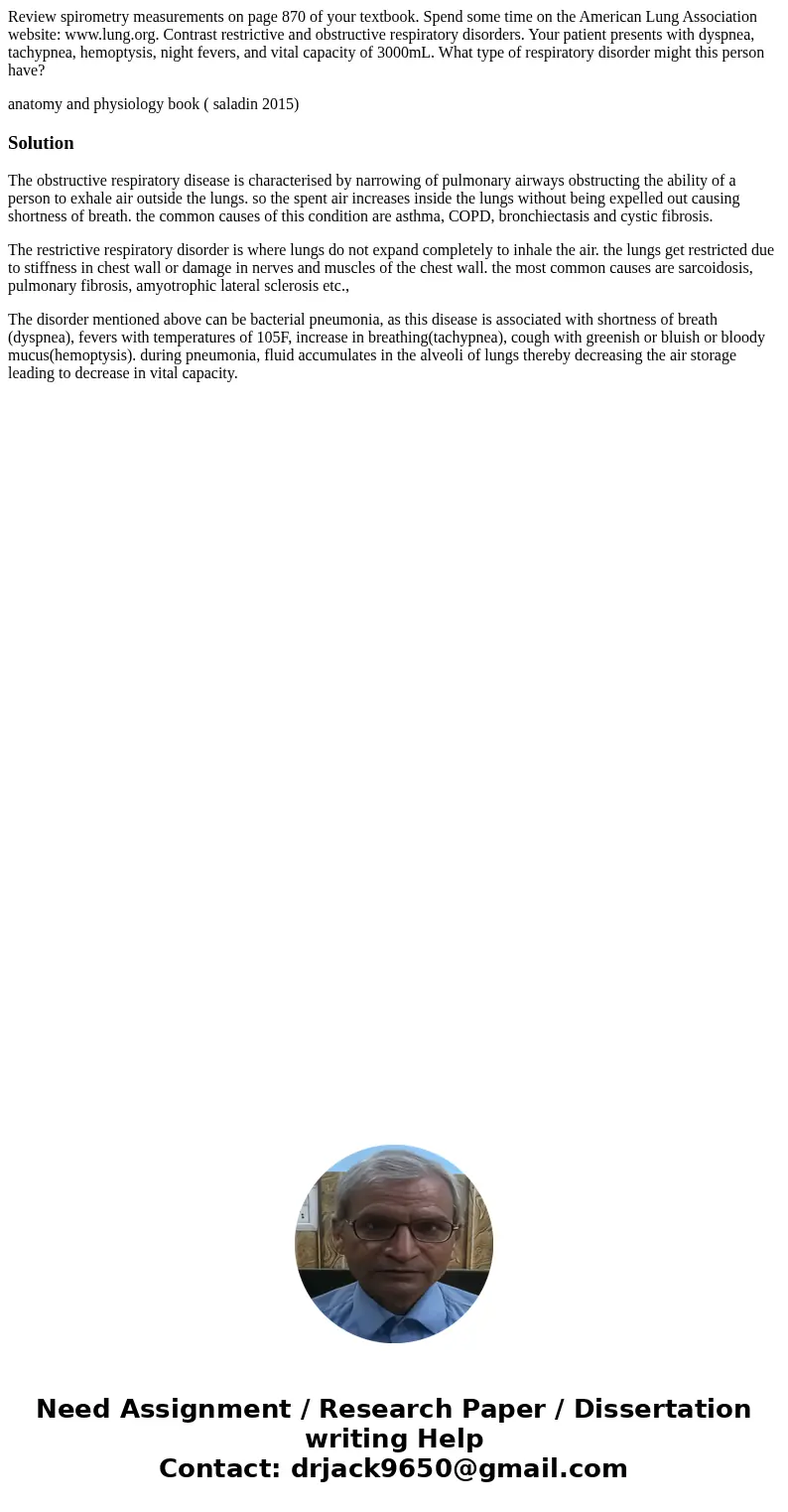Review spirometry measurements on page 870 of your textbook
Review spirometry measurements on page 870 of your textbook. Spend some time on the American Lung Association website: www.lung.org. Contrast restrictive and obstructive respiratory disorders. Your patient presents with dyspnea, tachypnea, hemoptysis, night fevers, and vital capacity of 3000mL. What type of respiratory disorder might this person have?
anatomy and physiology book ( saladin 2015)
Solution
The obstructive respiratory disease is characterised by narrowing of pulmonary airways obstructing the ability of a person to exhale air outside the lungs. so the spent air increases inside the lungs without being expelled out causing shortness of breath. the common causes of this condition are asthma, COPD, bronchiectasis and cystic fibrosis.
The restrictive respiratory disorder is where lungs do not expand completely to inhale the air. the lungs get restricted due to stiffness in chest wall or damage in nerves and muscles of the chest wall. the most common causes are sarcoidosis, pulmonary fibrosis, amyotrophic lateral sclerosis etc.,
The disorder mentioned above can be bacterial pneumonia, as this disease is associated with shortness of breath (dyspnea), fevers with temperatures of 105F, increase in breathing(tachypnea), cough with greenish or bluish or bloody mucus(hemoptysis). during pneumonia, fluid accumulates in the alveoli of lungs thereby decreasing the air storage leading to decrease in vital capacity.

 Homework Sourse
Homework Sourse